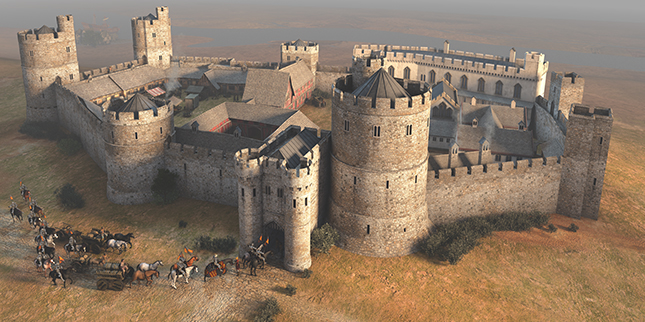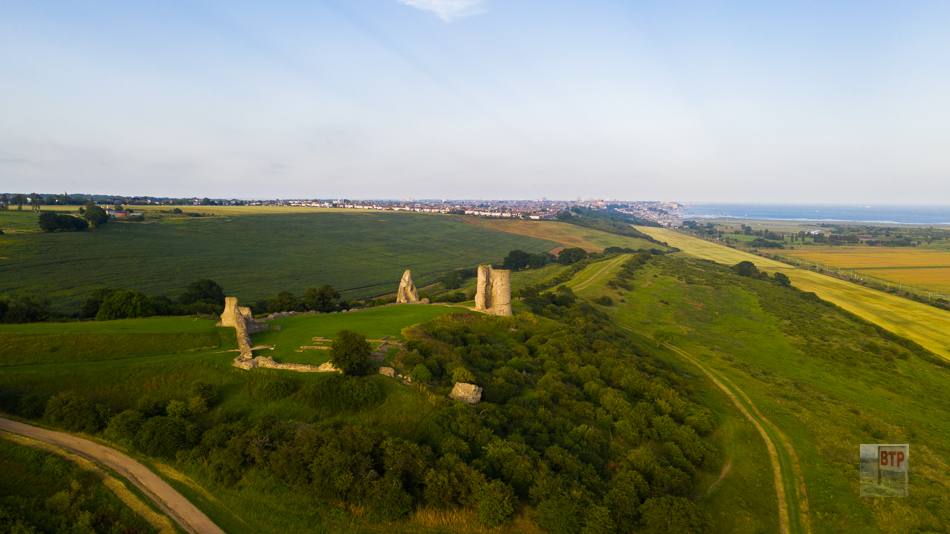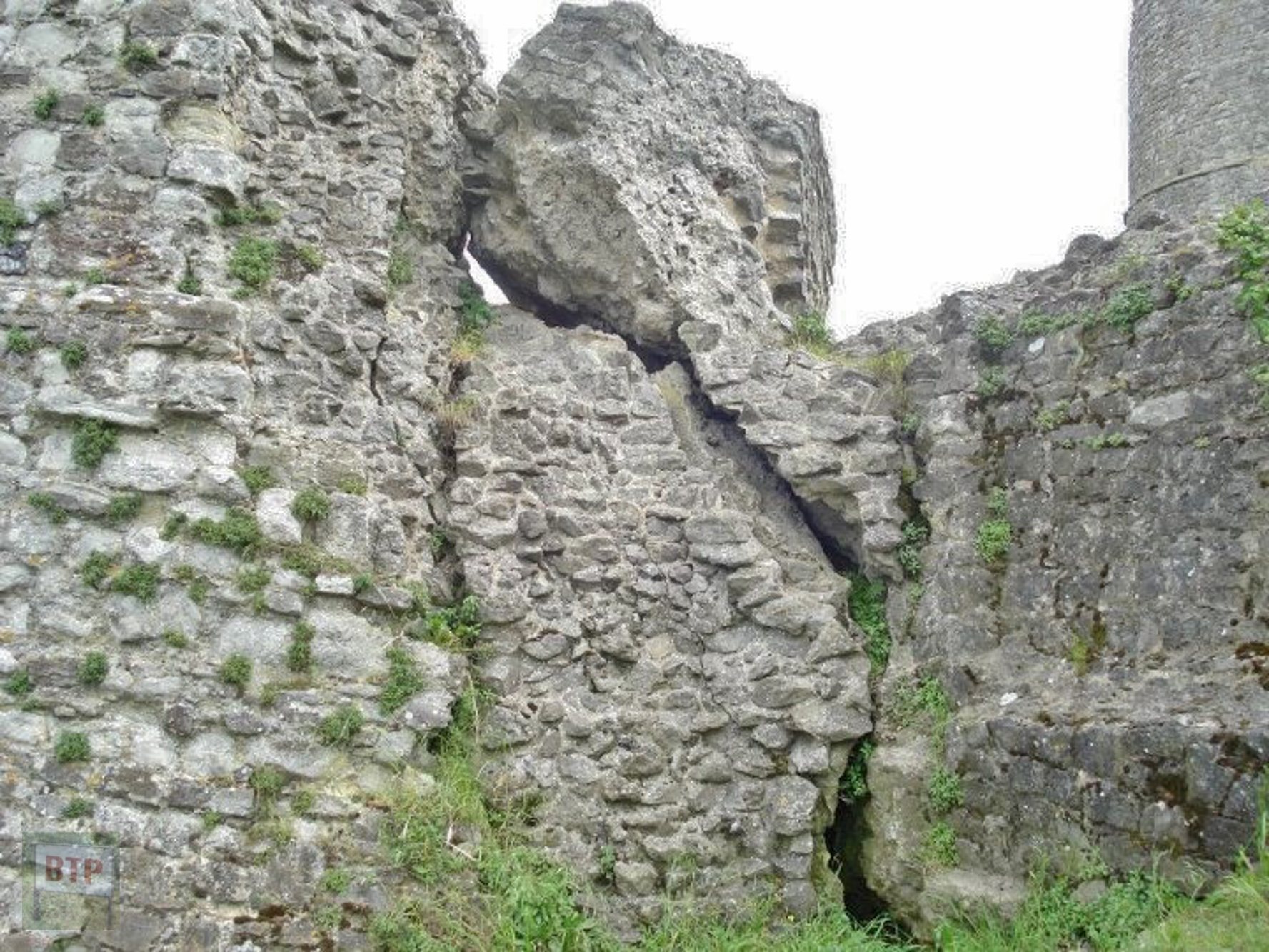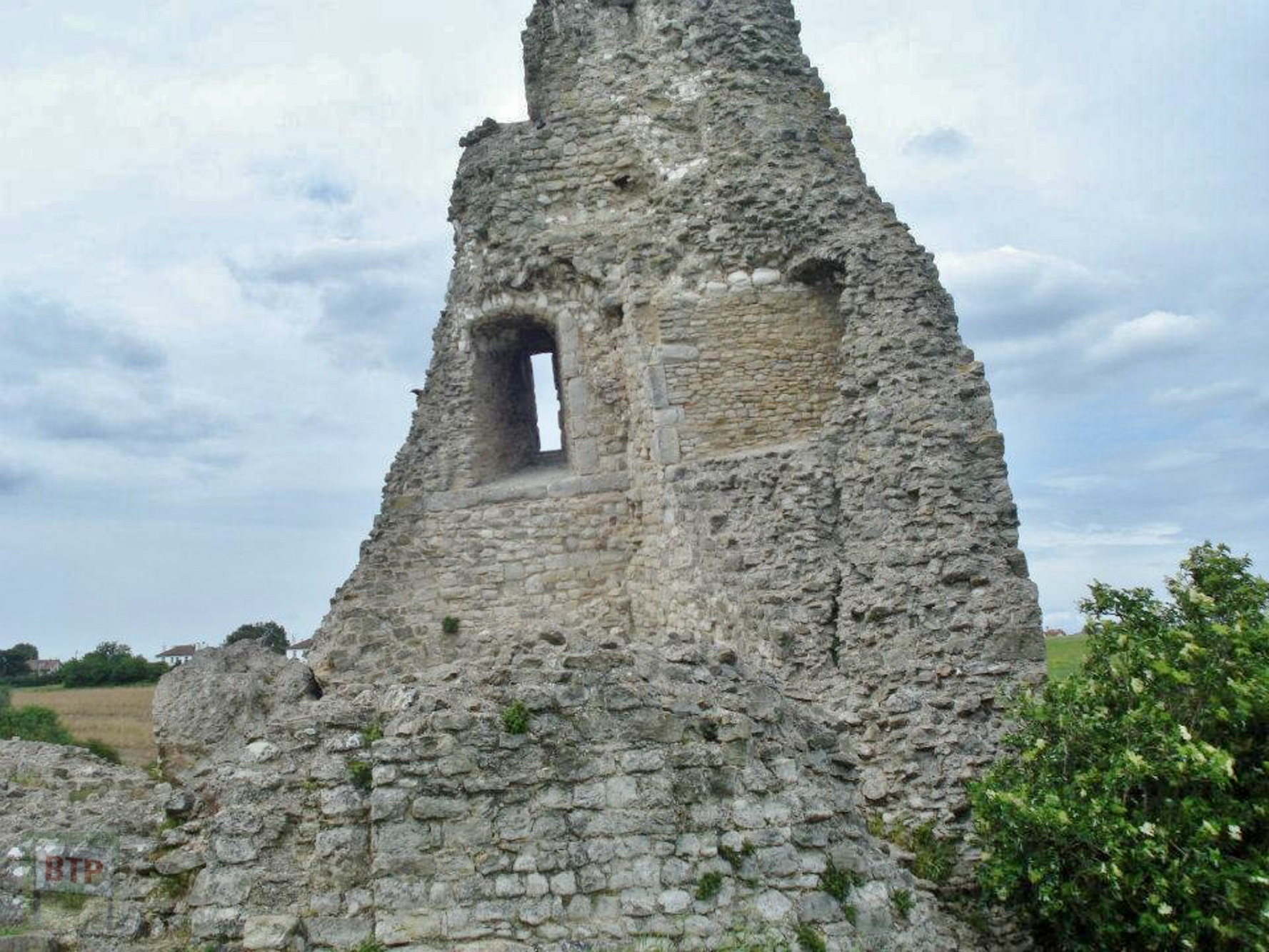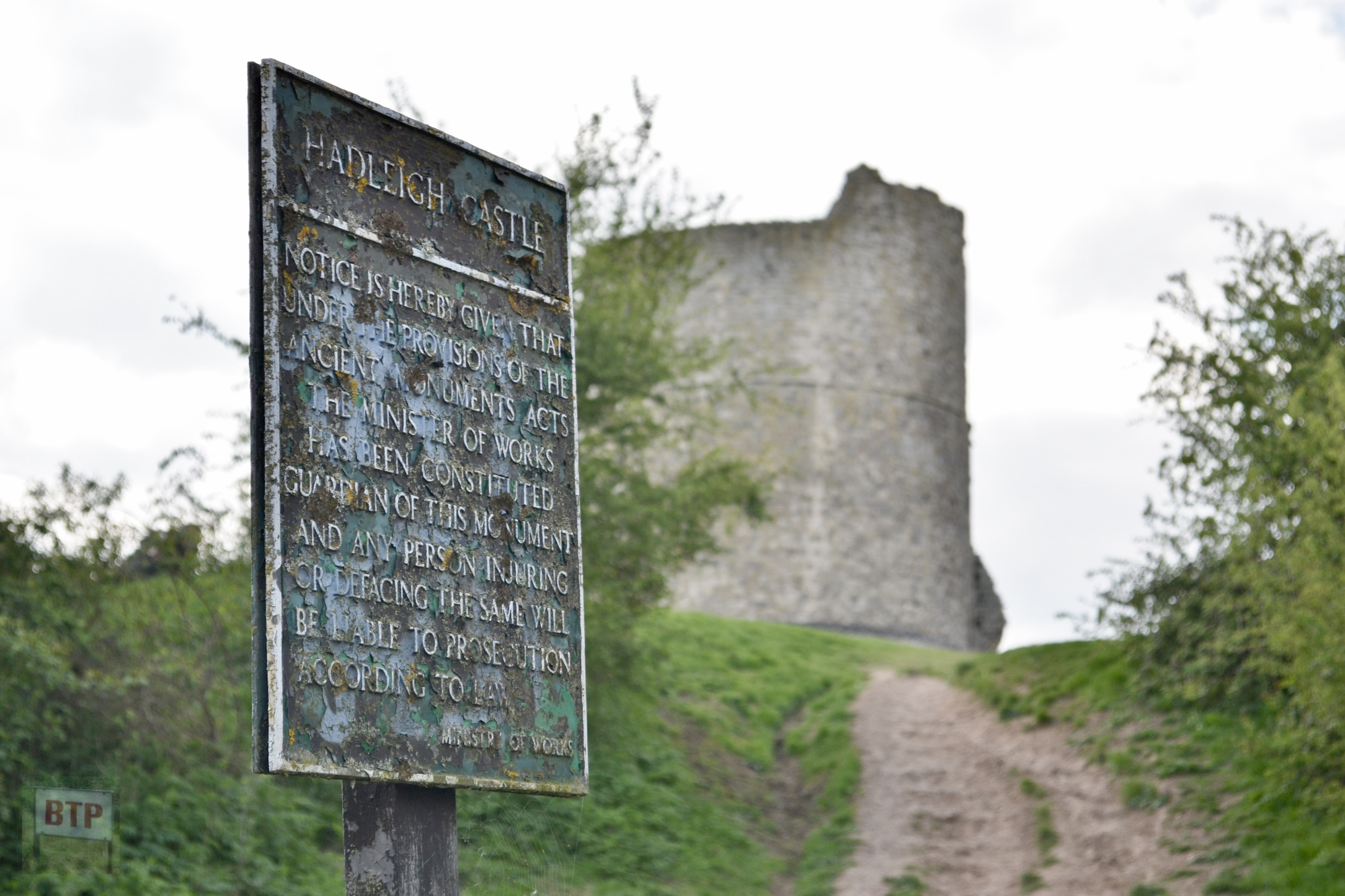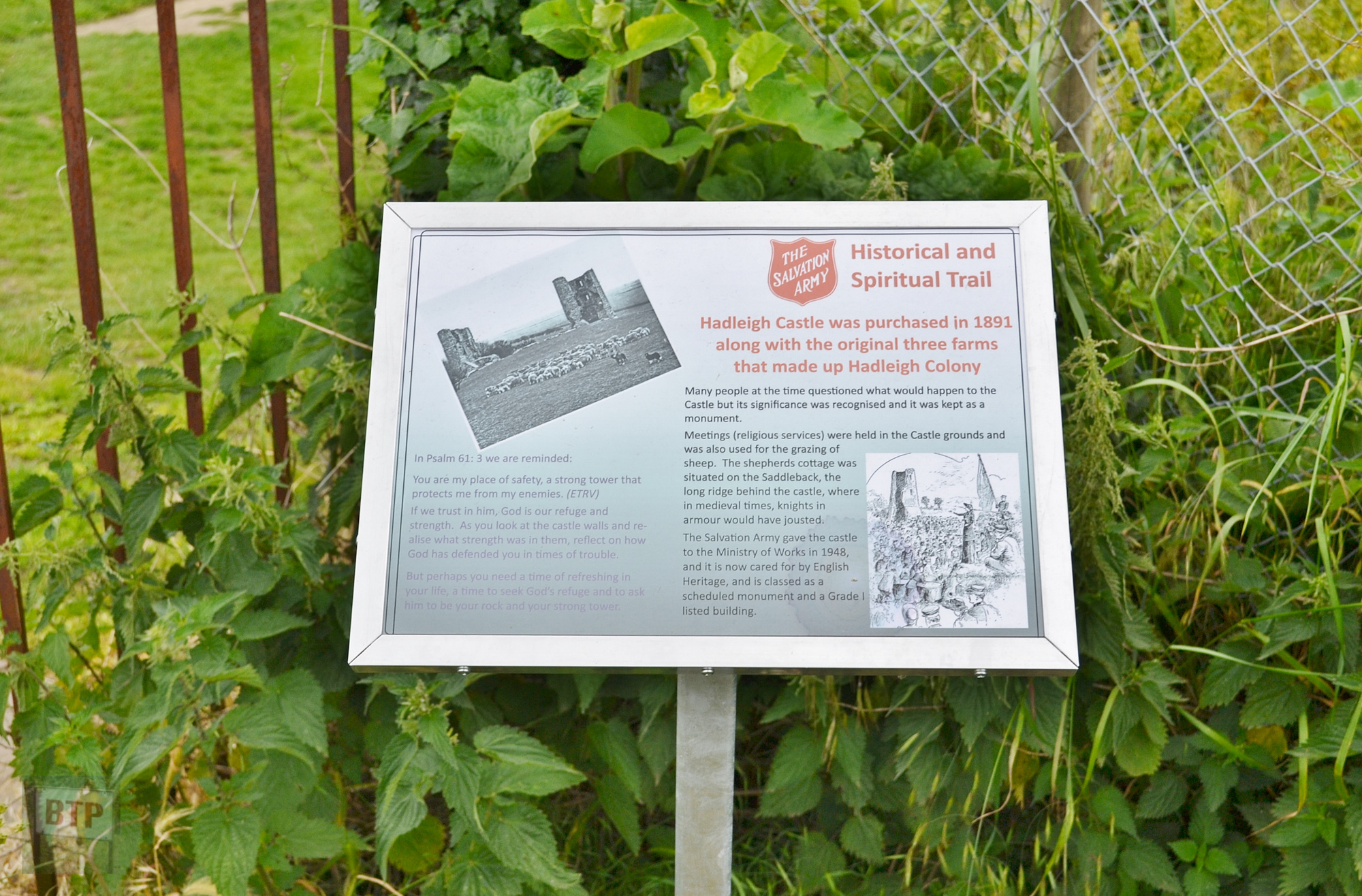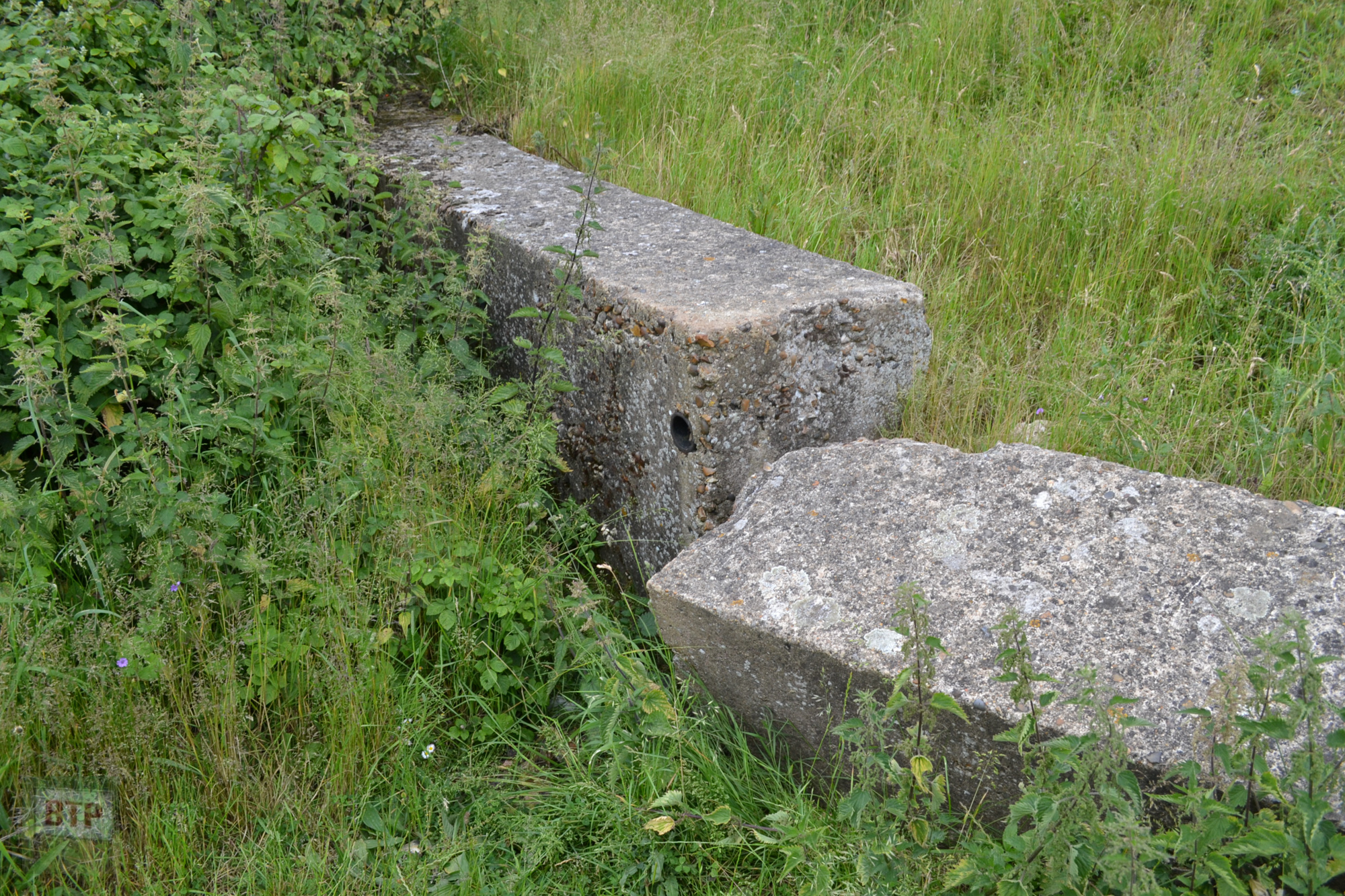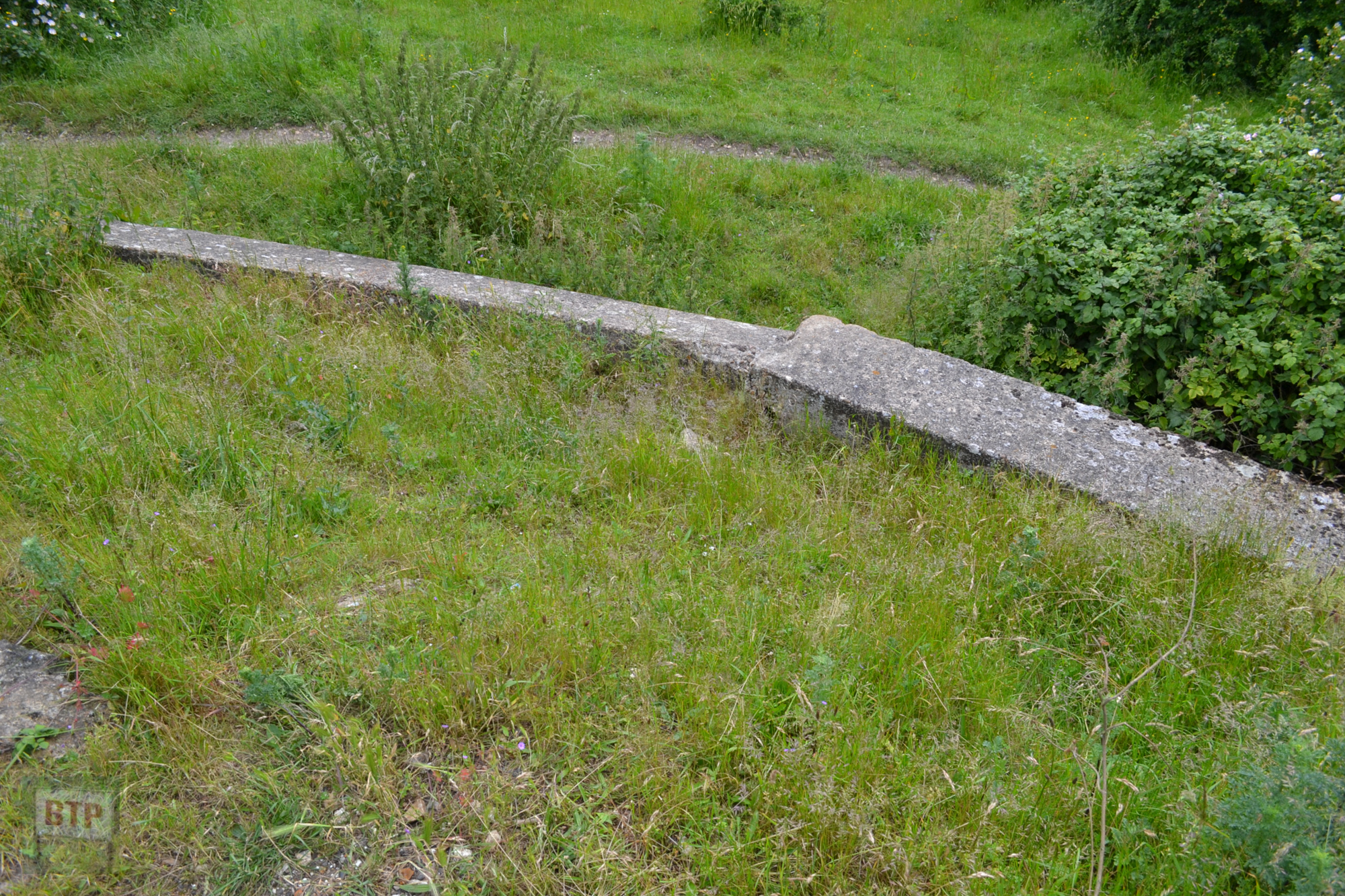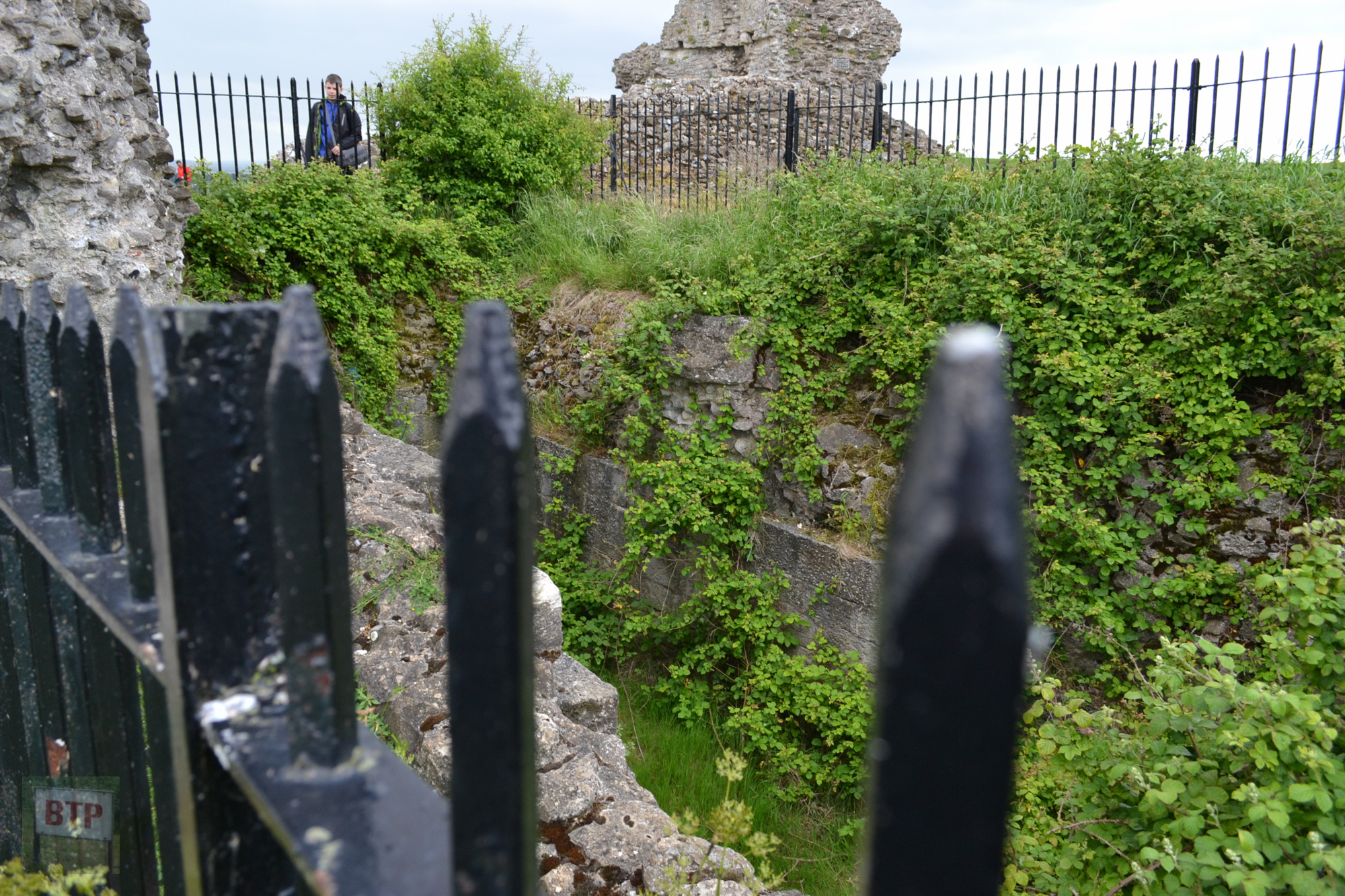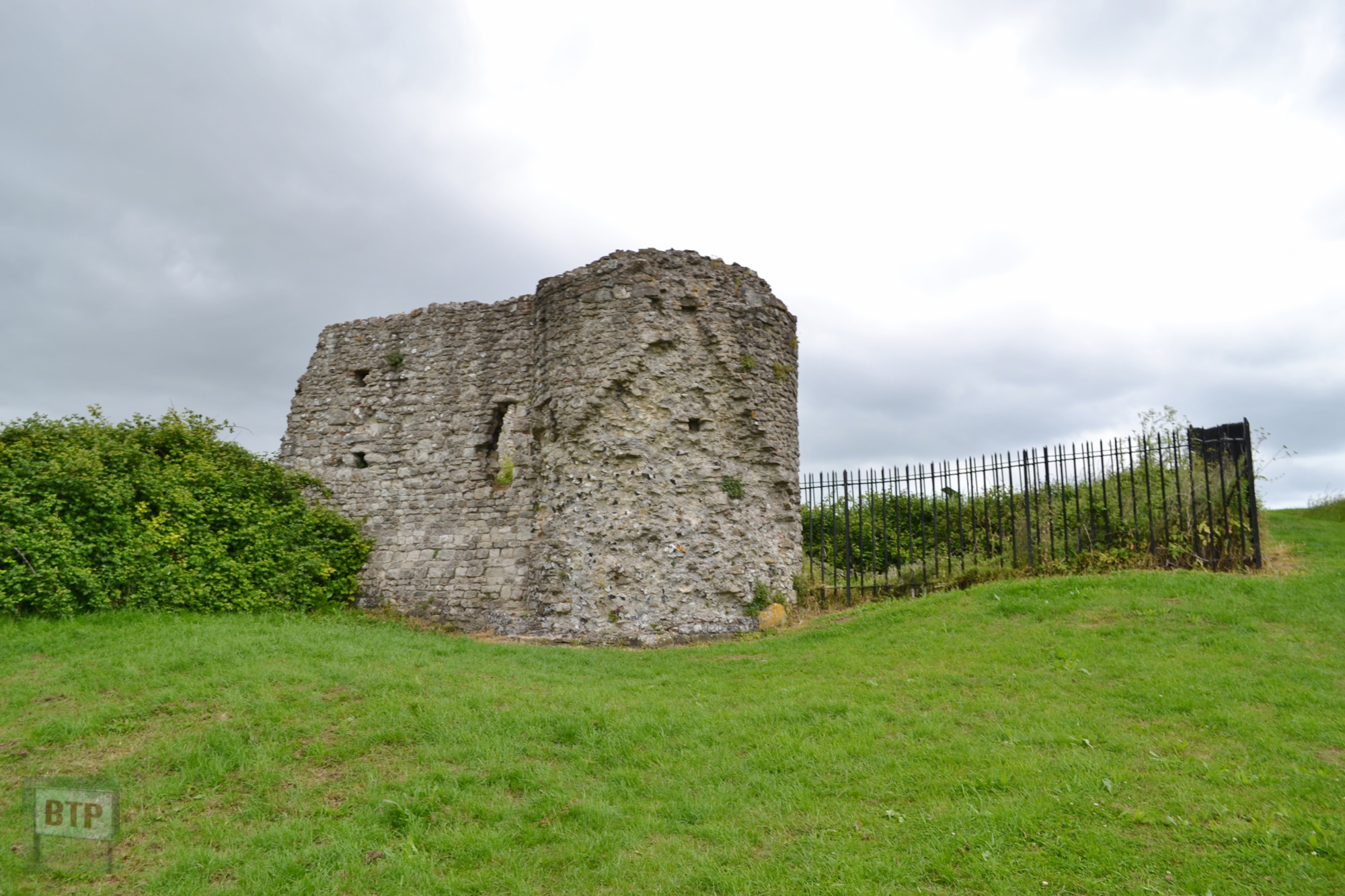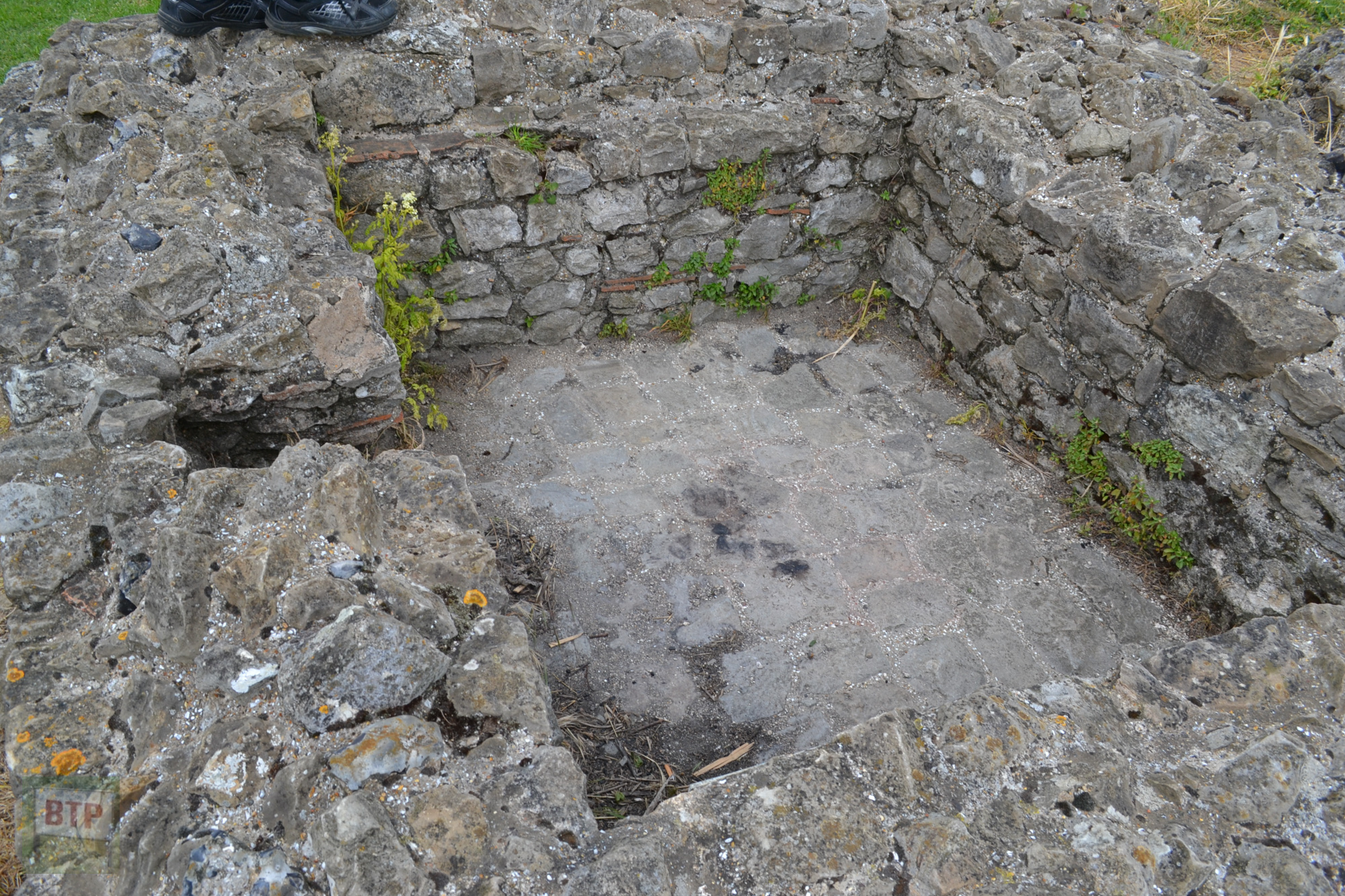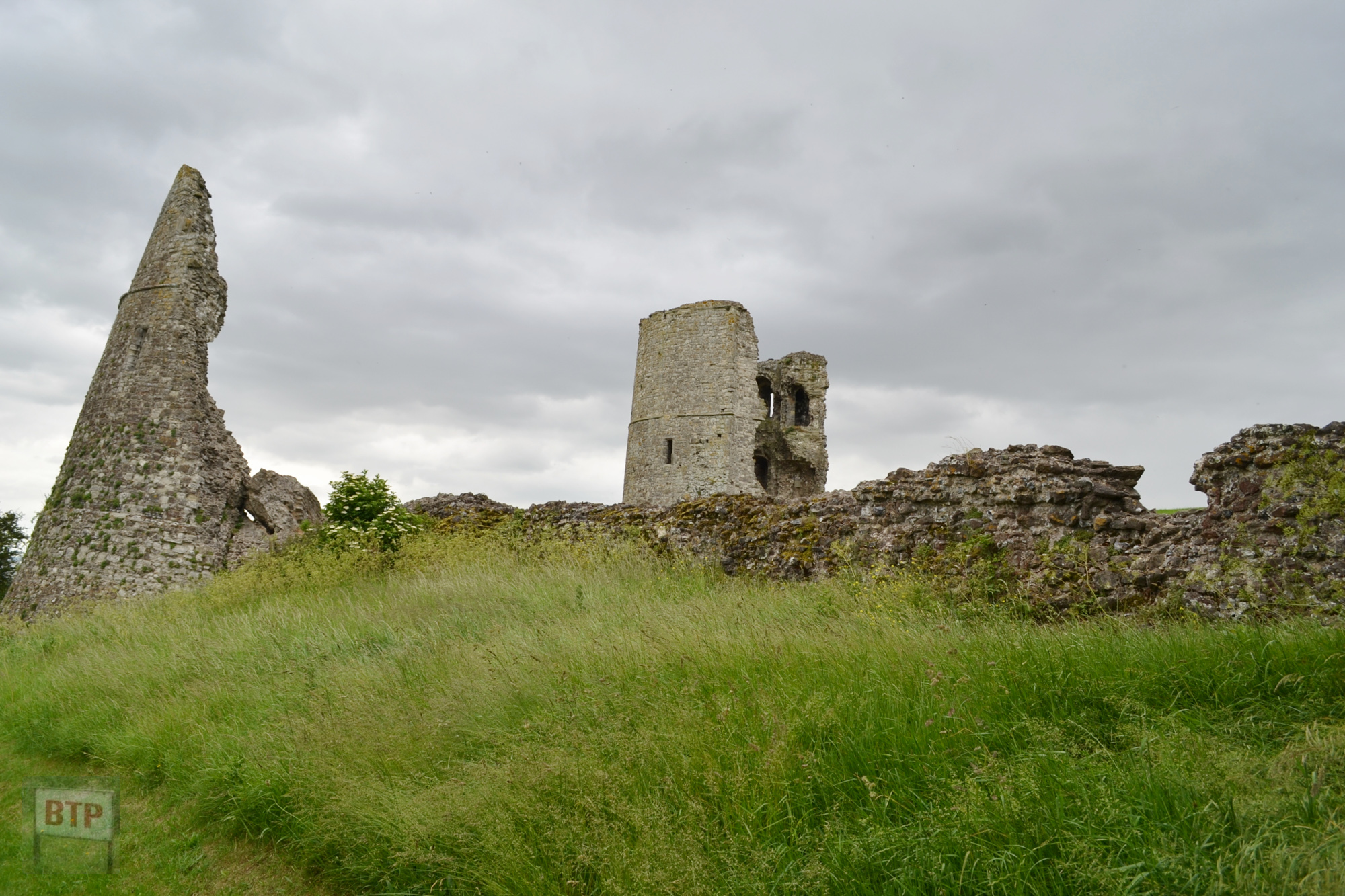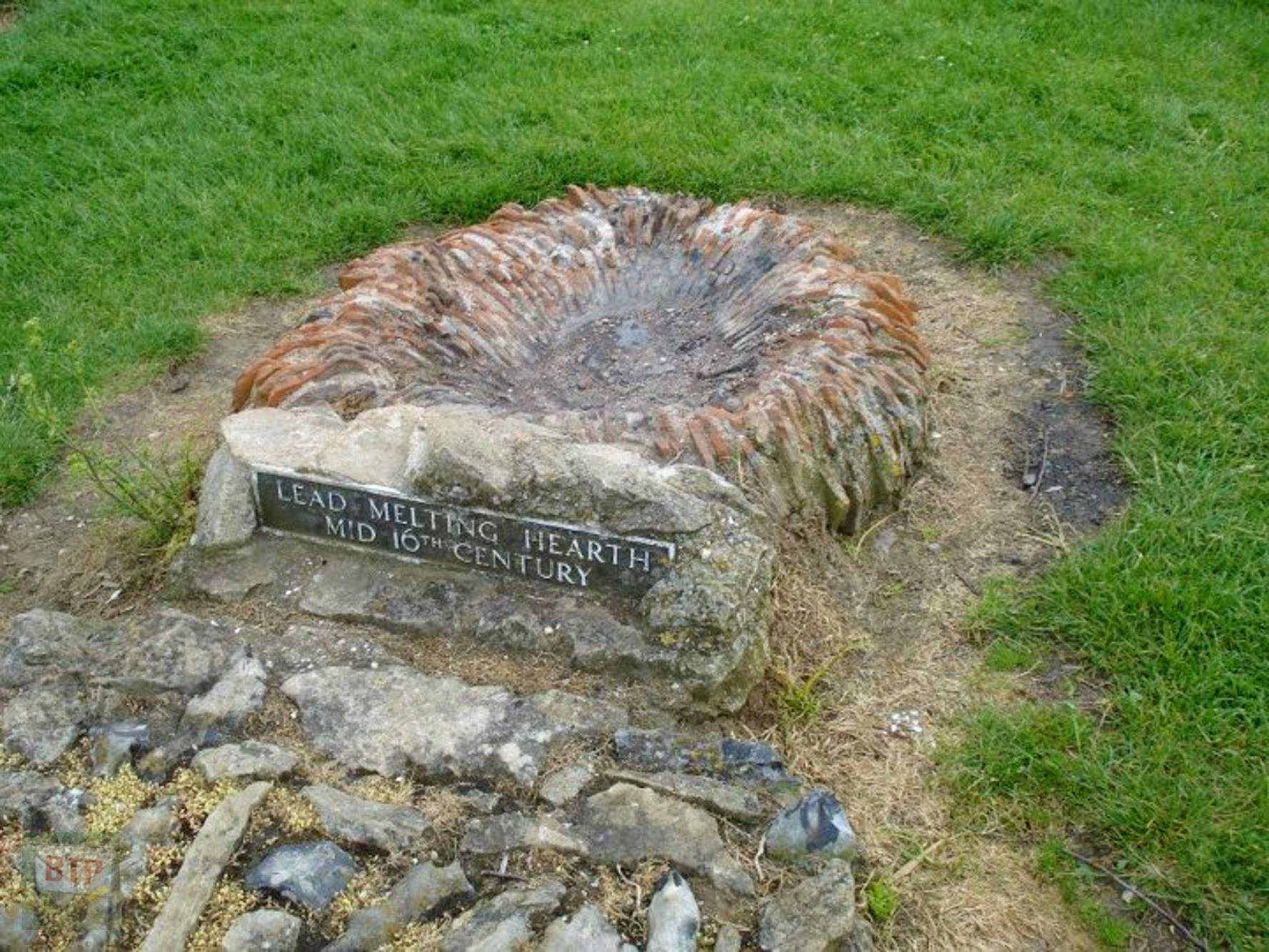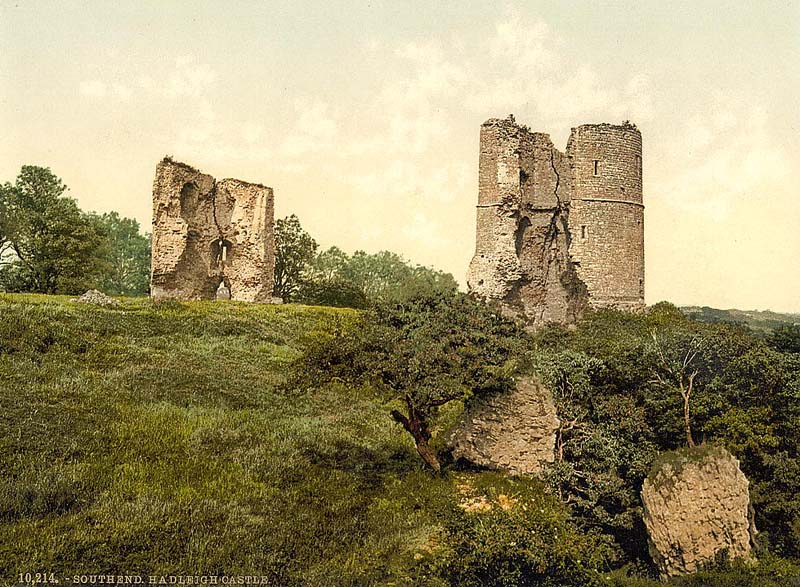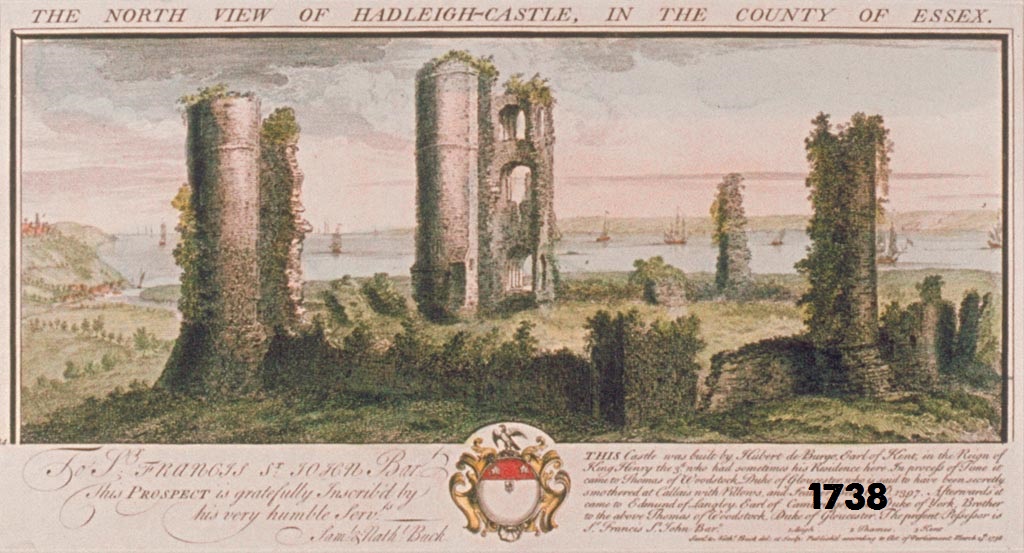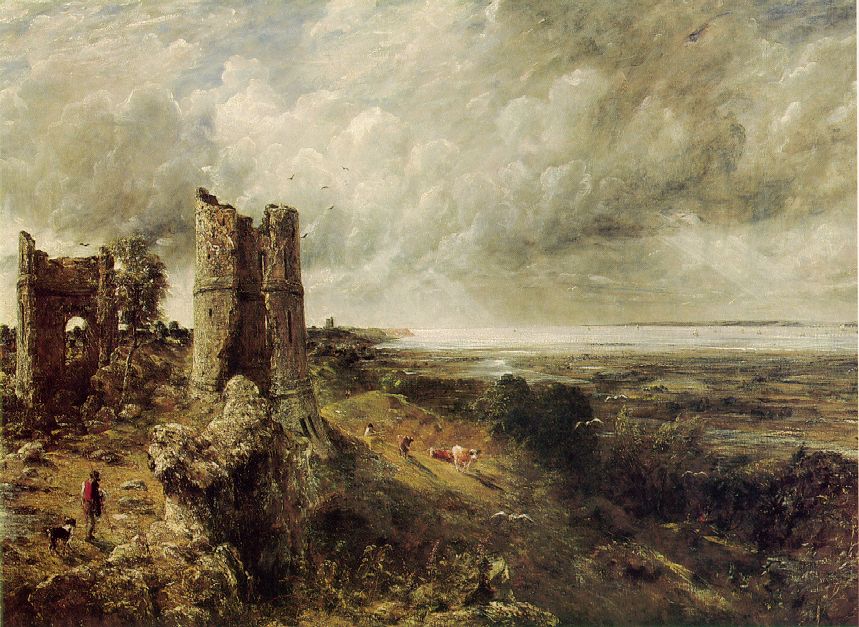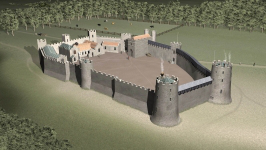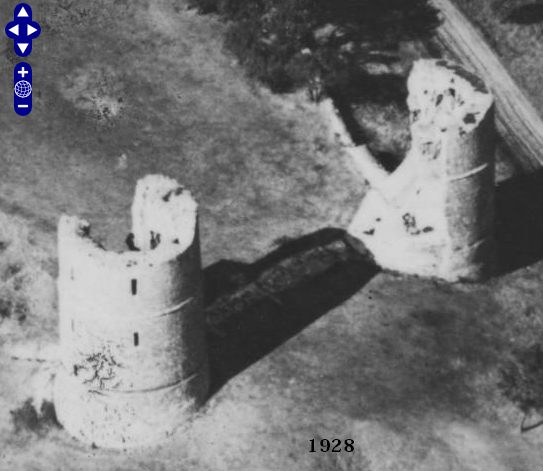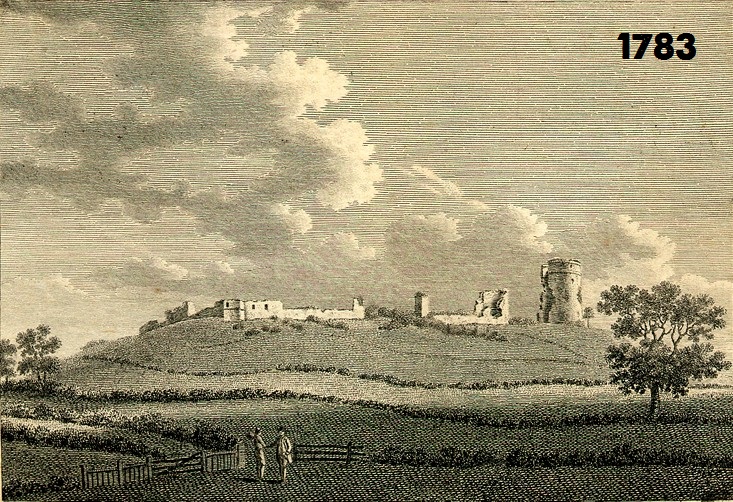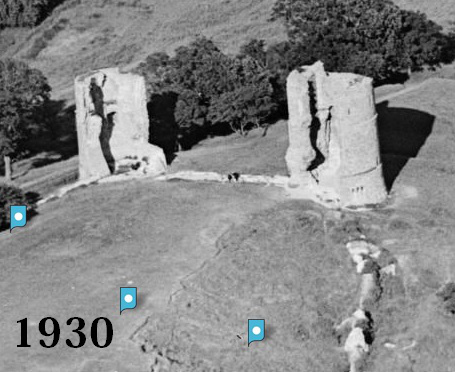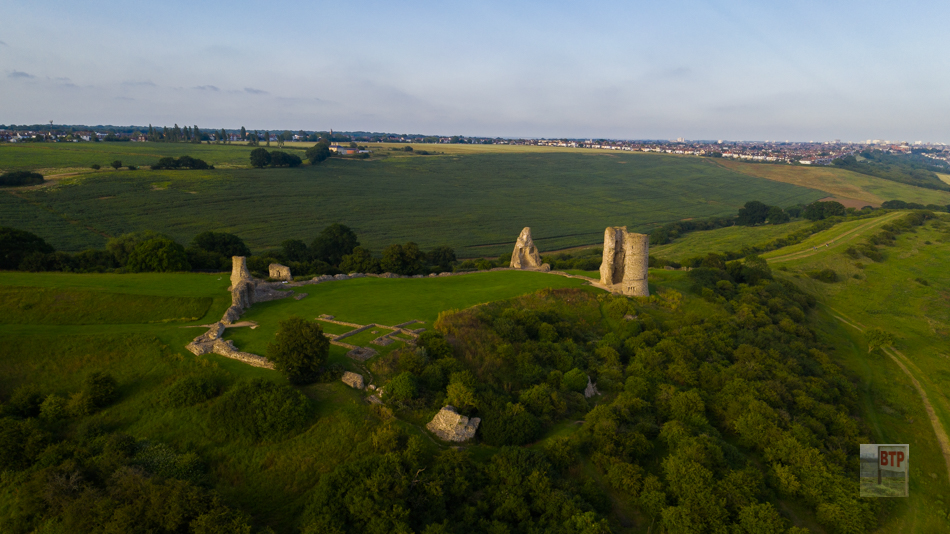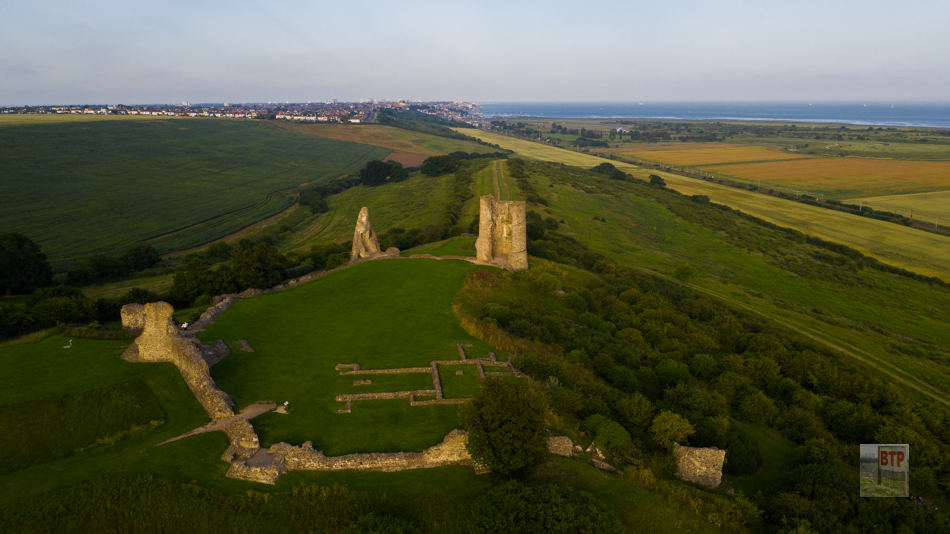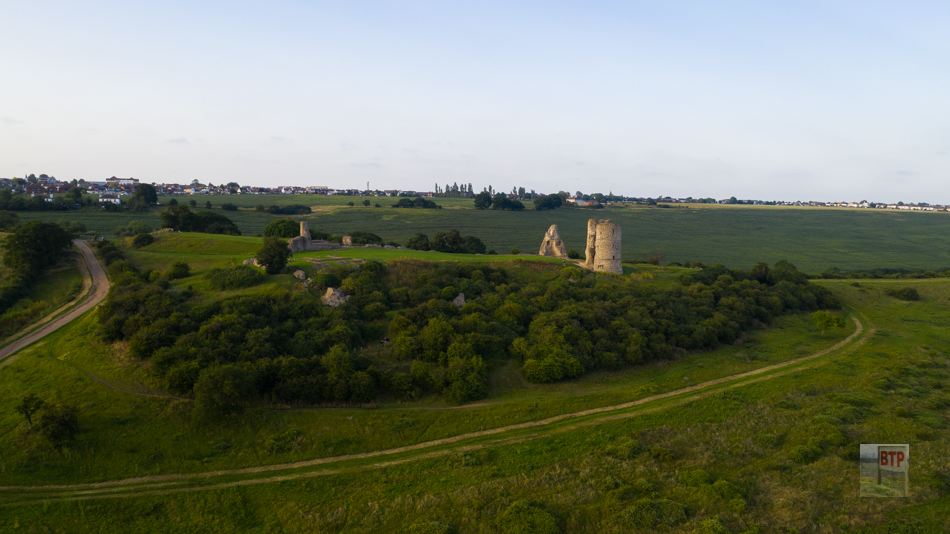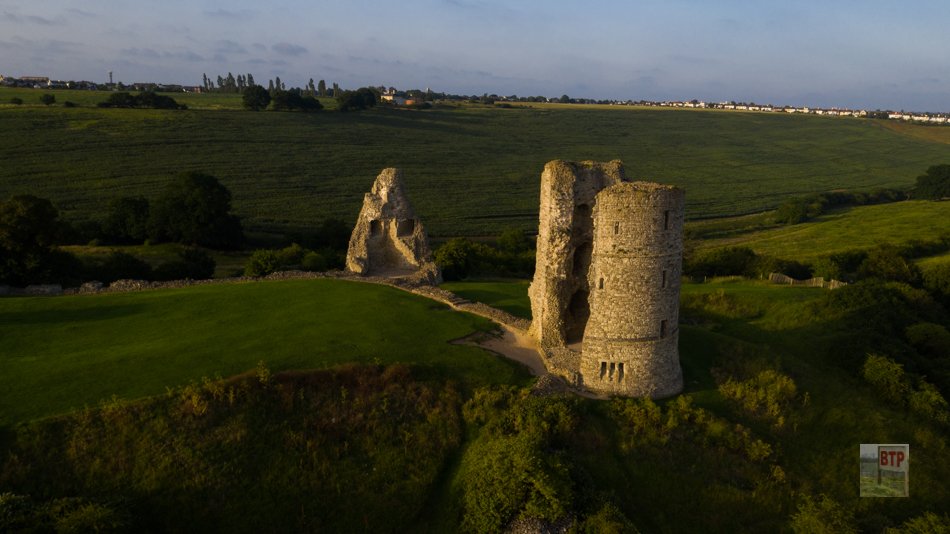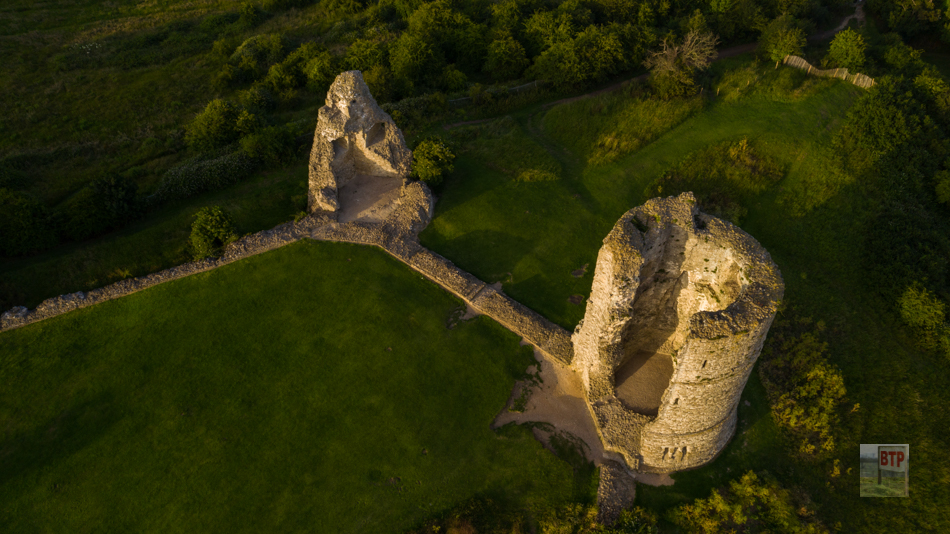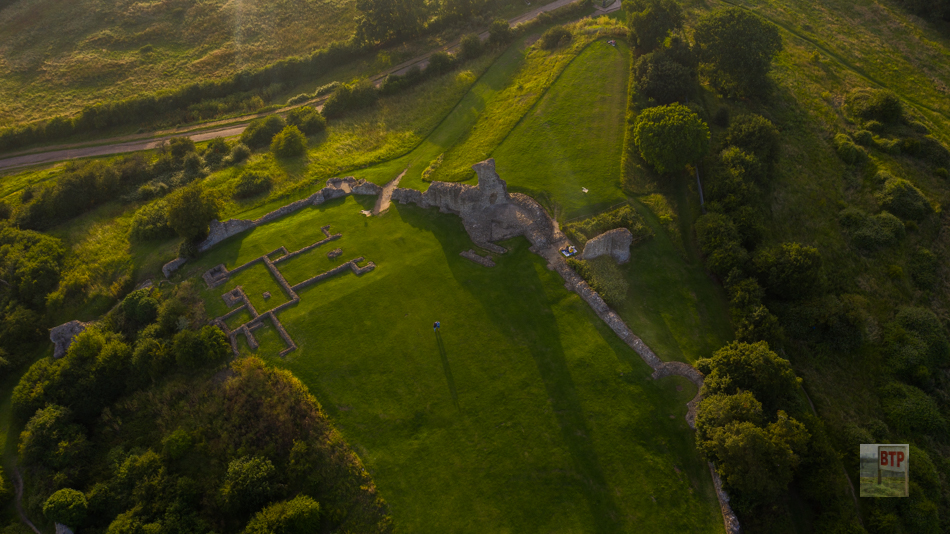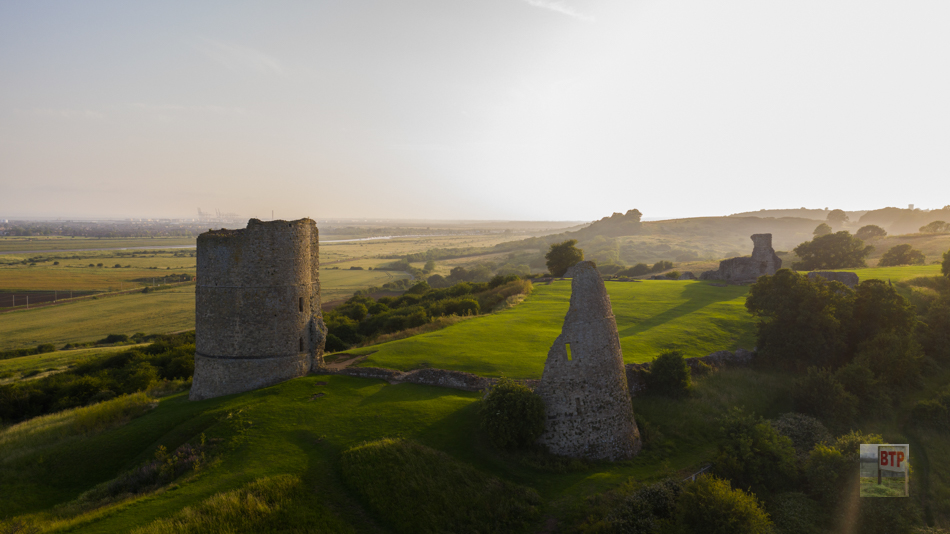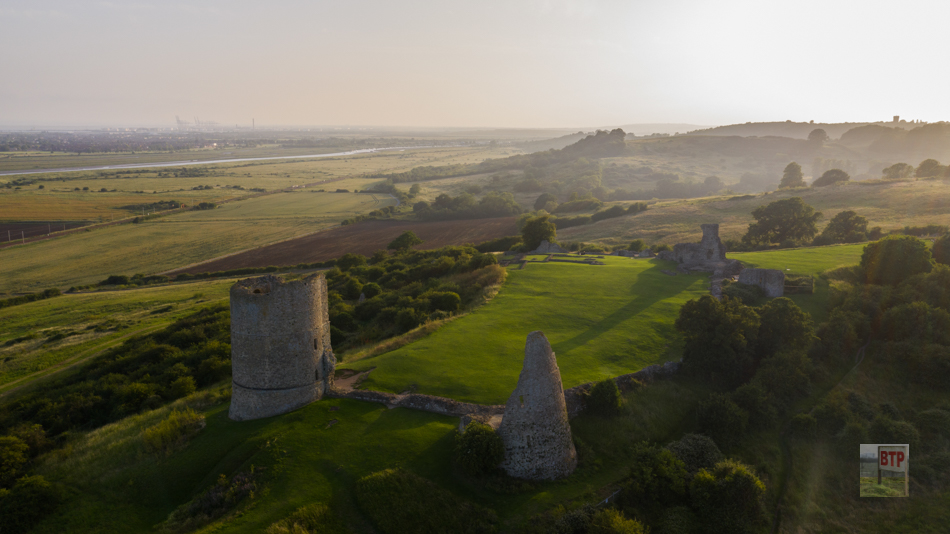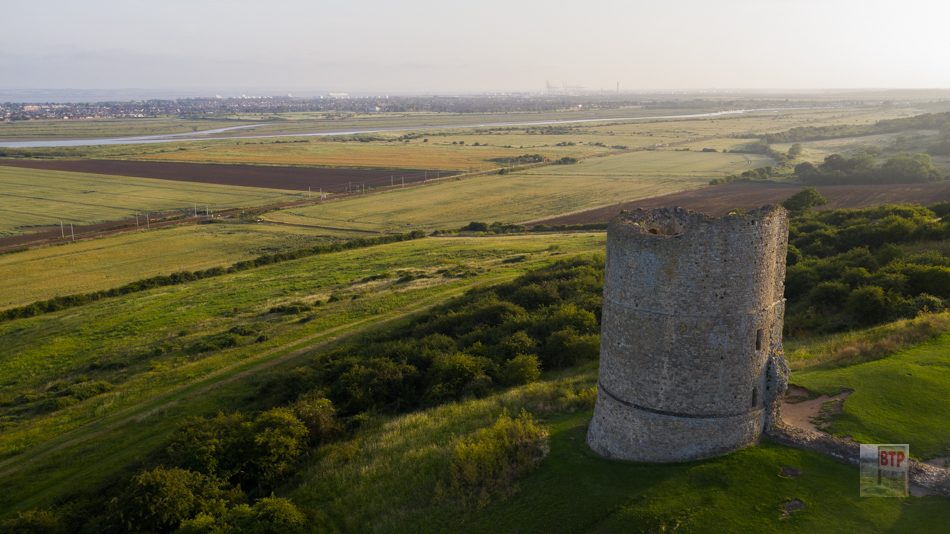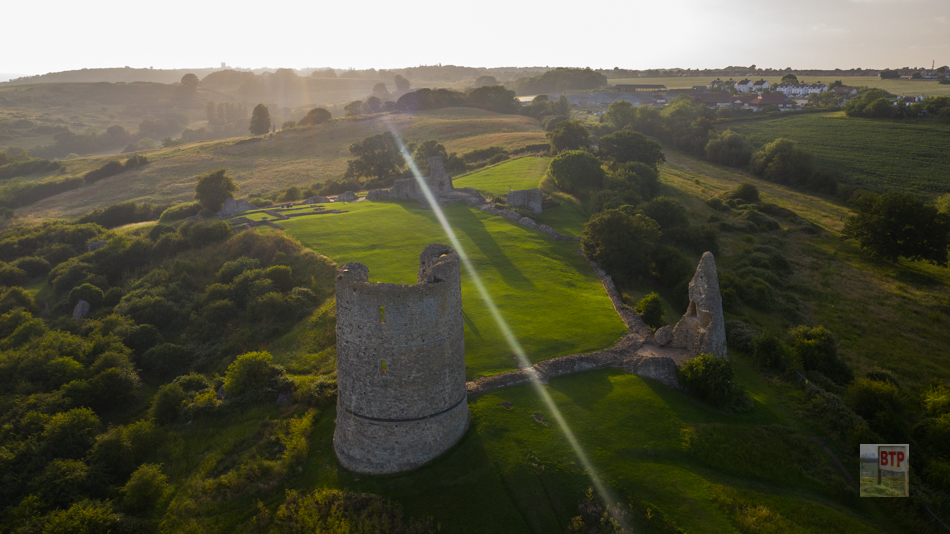Hadleigh Castle is a local gem. In 1215 King John gave this area of land, known as the manor of Hadleigh, along with many other gifts, to Hubert de Burgh. Hubert was a trusted follower of the king, and was the custodian of the two important castles at Windsor and Dover. Hubert built this large turreted castle as a statement of his power. The area was originally a great wood perfect for hunting, prior to when coppicing was introduced by Henry VIII and timber size became greatly reduced. His successful career came to an end after quarrels with the king, and he was forced to return his lands, including Hadleigh in 1239. Interesting to note that some Roman bricks were used in the construction.
Hadleigh Castle was built on geologically unstable clay. There were already problems in 1274, when it was said to be ‘badly built and decayed’. Subsequent land slips have moved the south wall of the castle and caused the collapse of most of the north-east tower.
The castle as it may have appeared in about 1370, at the end of a ten year programme of refurbishment. Edward III spent large sums of money on a new gateway and high tower, lodging chambers and a chapel. The east front was transformed with the addition of two impressive towers. The castle was surrounded by parkland and possibly a garden or orchard near the entrance.
The castle ruins are now an English Heritage site which is open and free for wanderers to visit. Some interesting features remaining is a lead-melting hearth from the mid 16th century.
How much has Hadleigh Castle changed over the past?
After flicking through a 1930′s guidebook to Southend and the surrounding area, I found a few interesting pictures of Hadleigh castle, taken prior to 1930. They show the north-east tower in almost as good condition as the ‘big one’ (south-east) which remains today, and is seen as the main part of the castle, even though this is just one of the original four which have crumbled away now.
One of the four towers, the one to the South-West, remains in part down the hill in the bushes. A clear line from the hill can be seen as to where a landslide occurred, sending the southern wall of the castle down the hill’s side. In it’s day, the portion of the castle amongst the shrubbery would have stood flat on the grassy area of the hill like the rest of it does today. The North-West tower exists as only the first floor, used as a kitchen, which can be found as a flat area of the castle’s concrete/stone on which it is a popular seating area. The castle was doomed for collapse almost as soon as it was built. It began to fall down under 100 years of it standing, despite being used for many centuries!
Below are an assortment of images showing reconstructions of the castle in the Middle Ages, with artwork showing it in the years after including Constable’s famous painting, through to photography which shows how the castle has changed up to 100 years ago.
Drone Photos
Please note that these photos were taken by a professional drone operator with CAA permission. Hadleigh Castle is at the edge of Southend Airport’s airspace so drones must be flown within the legal parameters.

